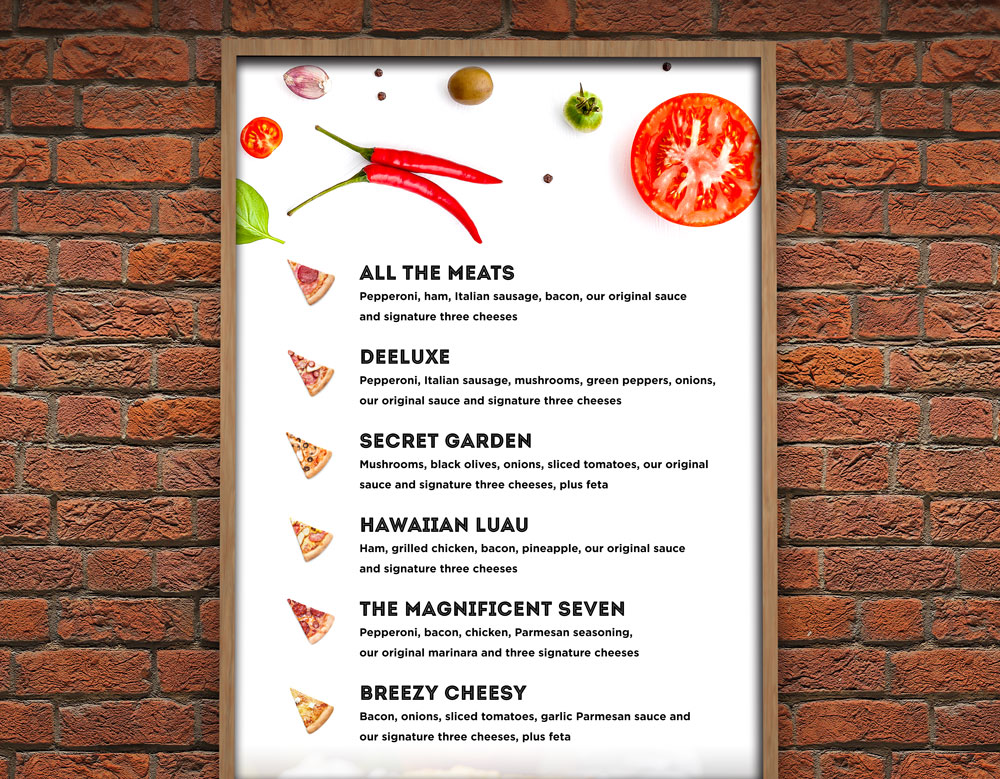- Digital signage can be an essential restaurant marketing tool, highlighting profitable food items and enabling up-to-the-minute menu pricing.
- Use digital signage to promote daily/weekly/hourly specials and offer status updates on orders.
Related: How digital restaurant signage can help you sell more pizza
By Tracy Morin
Whether customers are visiting your pizzeria for carryout and to-go orders or spending some dine-in time, digital signage can help create a more immersive, interactive experience for them. And, for the operator, these signs point customers to higher-profit food items, enable up-to-the-minute menu pricing and availability, and—especially important in today’s climate—eliminate the need for potentially unsanitary paper menus.
“The biggest benefits are that they encourage impulse buys, help create habitual consumers by displaying daily or real-time specials, and may even help recapture customers or increase the purchasing frequency of current customers by introducing or promoting new menu items,” explains Darren Easton, vice president and creative director for The Cyphers Agency in Crofton, Maryland. “Most simply, your digital signage can and should be an essential aspect of your marketing, and investing your time and effort in making it the best it can be is, in our experience, time and effort very well spent.”
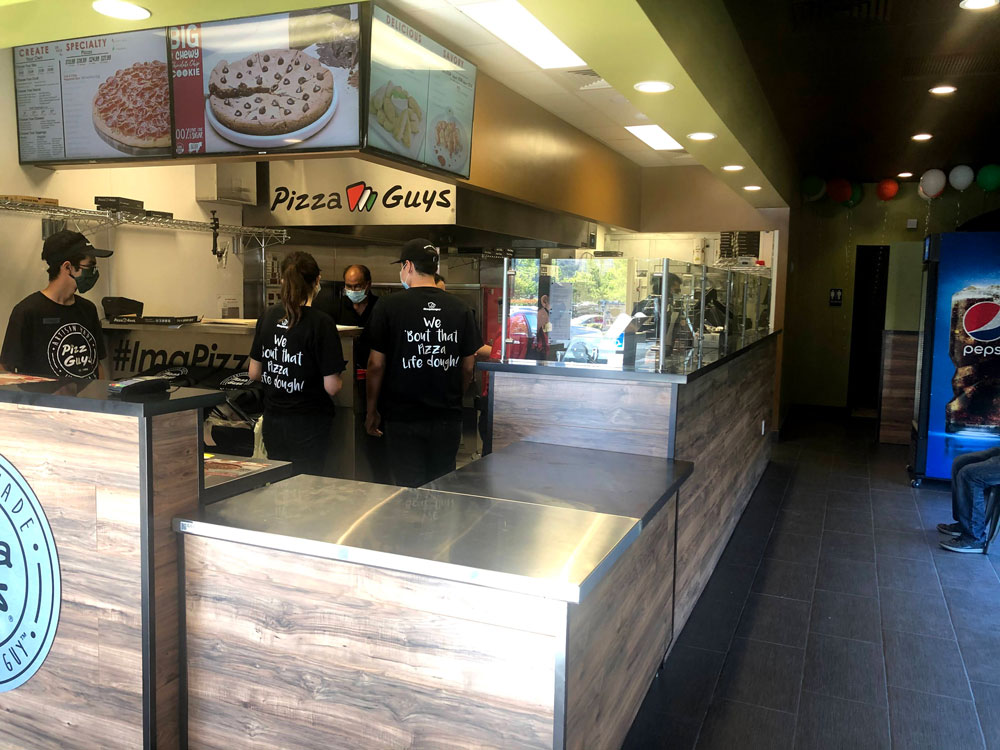
At Pizza Guys, digital signs highlight menus, info on current charitable campaigns and more.
Pandemic-Era Updates
Most COVID-19 restrictions have been lifted or eased in many parts of the country, but operators still need to present the most accurate information to their customers. And as supply chains continue to face interruptions—and shortages and sellouts remain commonplace—keeping menus up-to-date continues to be a challenge. “During the pandemic especially, you want to have the current pricing and availability for your menu items everywhere, from your POS system to third-party platforms to your in-store menus,” says Dan Bejmuk, CEO of Dreambox Creations in San Dimas, California. “There has been more movement toward one-time use menus or those that can be sanitized between uses, but these incur either more printing or labor costs.” Digital solutions, of course, can offer an alternative to both of these options and possibly save money in the long-term.
“Digital menu boards force you to be hyper-efficient on what you’re showing to customers. You might choose to narrow down to eight core, highly profitable specials.”
— Brian Nelson, NewsBreak Media Network
Furthermore, as some customers remain wary of dining in restaurants and have reduced the amount of time and money they’re spending outside the home, Easton notes that it’s essential for restaurant operators to do all they can to reach consumers—including diversifying how they use their digital signage. “Whereas you may have simply ‘set and forget’ signage with your hours and weekly specials in the past, you should now utilize it to communicate diverse messages,” Easton advises. He recommends using signage for the following:
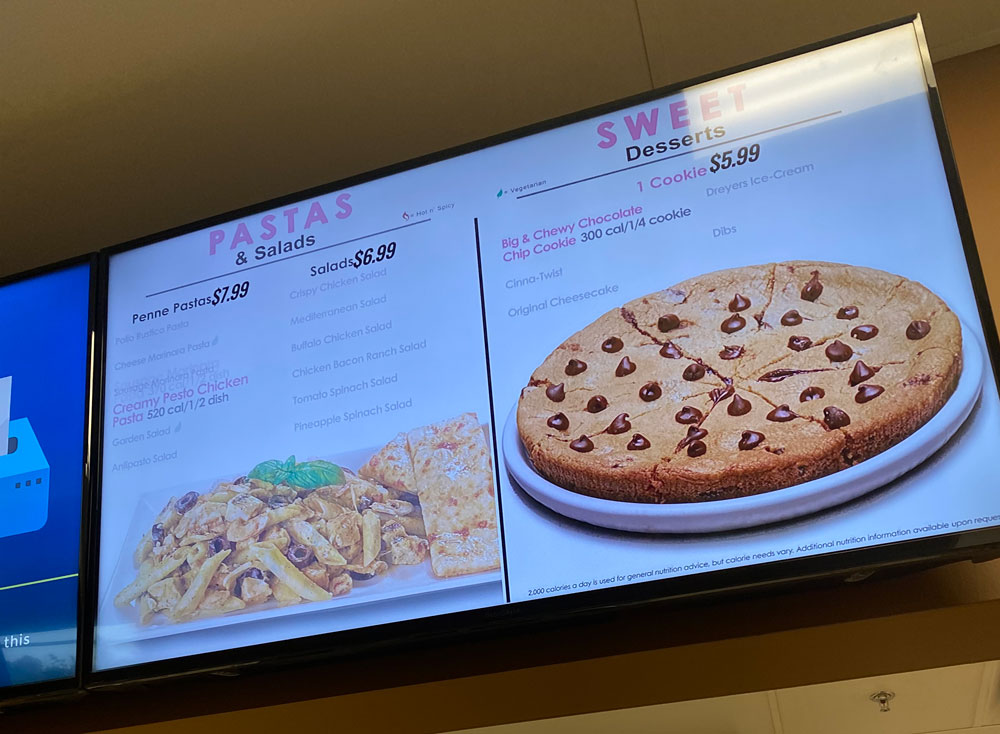
Photo courtesy Pizza Guys
- Continuing to share important pandemic-related health and safety measures in real time to help keep employees and customers safe. Customers still want to know that their favorite restaurant is adhering to the proper procedures. This is especially important for franchises, as policies and procedures may range from location to location (and therefore would not be covered by an all-encompassing email or social media post).
- Providing directions/instructions for customers in the restaurant so that they know where to go and can get to their intended destinations quickly, maintaining social distancing (if still required) and minimizing or eliminating interaction with staff for those patrons who are still a little nervous.
- Offering status updates on orders, which allows customers to spread out, move outdoors as
they wait, etc. - Promoting daily/weekly/hourly specials and promos, with a heavy focus on takeout/curbside/delivery, since convenience and in-home dining are still a priority for most customers.
- Showing support and appreciation for customers as they start to return to your restaurant, thanking them for their business, and reminding them of your philanthropic endeavors and support for the community.
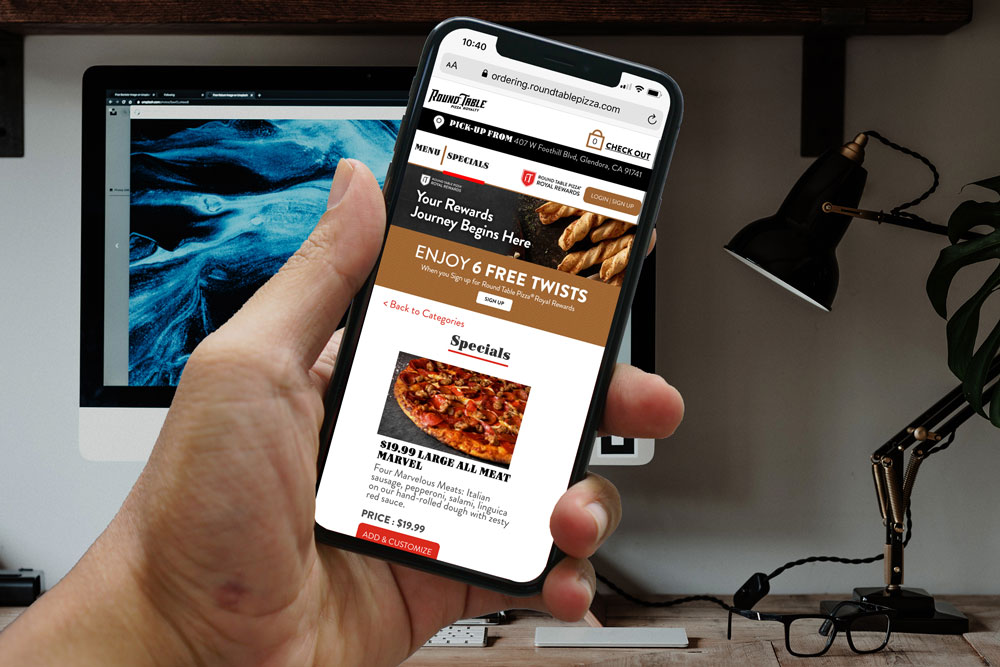
Photo courtesy Dreambox Creations
Digital To-Dos
Brian Nelson, COO of NewsBreak Media Network in Knoxville, Tennessee, says digital signage offers a way for multiunit operations to manage the network in an efficient and effective way, at both the corporate and site level. “Robust digital solutions allow the owner to change a price without having to make a change at 15 stores,” Nelson says. “Plus, they allow you to make changes without relying on employees, who should be focusing instead on customer service and in-house guests.” In addition, owners of any size operation can use in-store digital menu boards to influence buying behavior, such as grouping complementary products together to encourage add-ons or upsells.
Bejmuk asserts that the best uses of digital signage go beyond simply translating a paper menu to a screen setting. Instead, use images to get customers’ mouths watering; steer them to the most profitable food items, rotated according to daypart; and present the menu specialties that best represent the brand. “You can even use digital signs to convey user-generated content, like photos taken by guests,” Bejmuk adds. “Using these for in-store signage helps tell your story and adds authenticity and legitimacy to your business.”
Ultimately, think about how you can convey your brand values (such as hospitality) in a digital medium, Bejmuk recommends. Ask yourself: What do we have that other competitors don’t? Then work to get that across through your signage.
Finally, Nelson suggests, as trends are leading away from overstuffed, book-length menus, think in terms of greater efficiency. Use your digital menu space to master placement of menu items and include beautiful photography to entice trial of your latest and greatest creations. “Digital menu boards force you to be hyper-efficient on what you’re showing to customers,” Nelson notes. “You might choose to narrow down to eight core, highly profitable specials. Your regulars who order a pepperoni pizza every time are going to order it without looking at a menu—so use the space to highlight something else.”
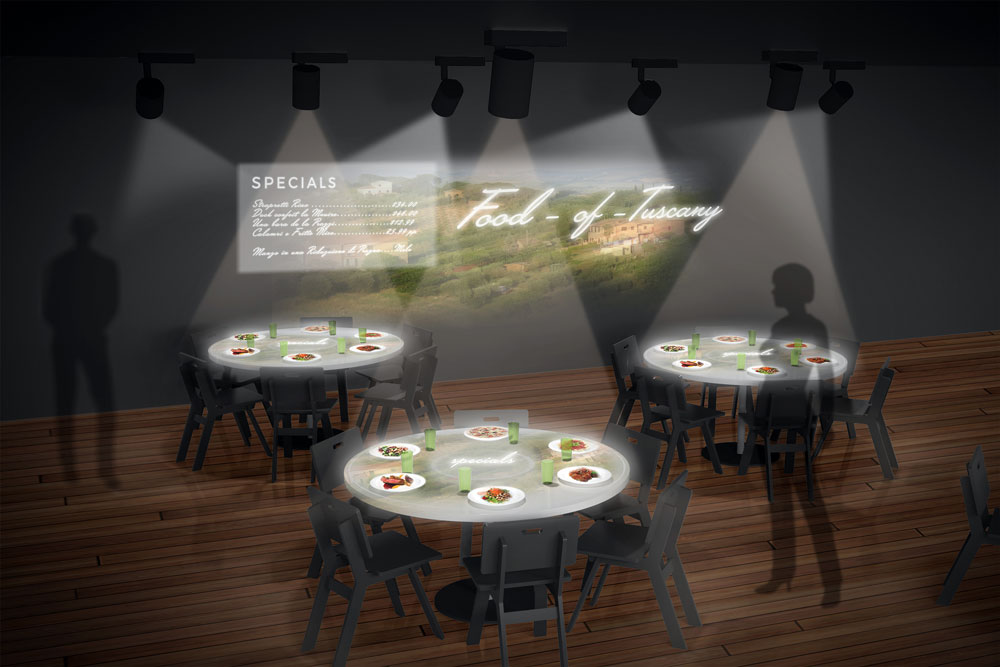
Photo courtesy Epson
Projecting the Future
Remi Del Mar, senior product manager in commercial visual products for Epson in Los Alamitos, California, notes that digital signage is only about 15 years old and remains a rapidly evolving space. It’s also somewhat fragmented, with various components making up this category: displays, content, and content management or cloud-based services. “Dynamic content is more attention-grabbing, but there’s a lot that goes into replacing static signage and making it a tool for engagement,” Del Mar says. “Digital signage requires the restaurant owner to have a vision for his space.”
Traditionally, digital menu boards may have provided an image, name, price and perhaps nutritional value for menu items. But Del Mar notes that owners can make them more engaging by adding fun elements like quizzes, up-to-date sports scores, or storytelling-type product info (such as where your produce comes from).
In the future, however, Del Mar believes in the power of projectors to create a richer guest experience. With this technology, info isn’t relegated to a wall—it can be cast on any surface: on tables or chairs, on the wall near restrooms, or on windows that face the street. “You can project 30” to 500” away with a single projector, and since you’re not bound by a frame, you get that wall space back and enjoy more flexibility,” Del Mar explains. These systems can work in tandem with motion sensors, project specials of the day on the tables of in-house diners or let customers outside know that you’re opening soon. Del Mar believes projectors help sell more food and drinks while tapping into the overall trends of immersive dining and shared experiences.
“While there’s no telling what the future holds for digital signage, I predict that, as with all technology, it will evolve to offer more and more options in the future,” Easton concludes. “This could be scannable real-time offers, the ability for customers to upload pictures and videos of their dining experiences—who knows! Whatever the future brings, it will be essential for restaurant owners to keep tabs on the latest technologies because, like it or not, signage reaches eyeballs and, therefore, signage sells.”
Tracy Morin is PMQ’s senior copy editor.



